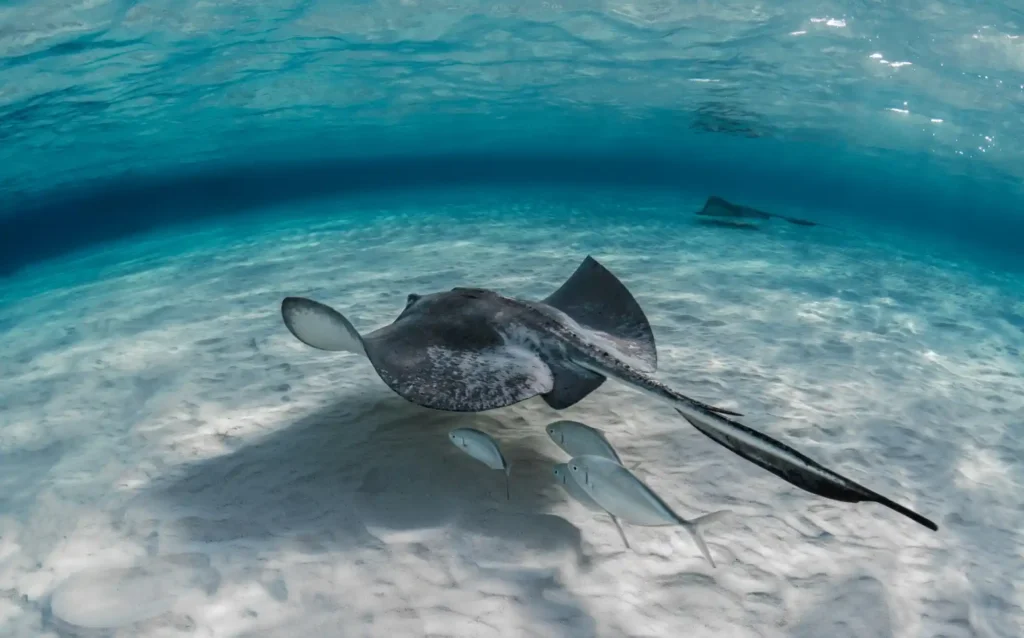How Marine Protected
Areas Preserve Biodiversity

How Marine Protected Areas Preserve Biodiversity
01
How Marine Protected Areas Preserve Biodiversity
How Marine Protected Areas Preserve Biodiversity
The ocean is teeming with life—from microscopic plankton to giant whales—each playing a crucial role in sustaining the balance of our planet. But as human activities continue to overexploit marine resources, destroy habitats, and disrupt ecological balance, the need for effective conservation has become critical. One of the most powerful tools we have to protect ocean biodiversity is the creation and enforcement of Marine Protected Areas (MPAs).
These designated areas in the ocean are set aside to conserve marine ecosystems, cultural resources, and the biodiversity within them. But how exactly do Marine Protected Areas work, and why are they so essential to sustaining life beneath the waves? Let’s explore.
What Are Marine Protected Areas?
Marine Protected Areas are sections of oceans, seas, and large lakes where human activity is more strictly regulated than the surrounding waters. These areas can range from small coastal reserves to vast stretches of open ocean. Depending on the level of protection, MPAs may allow limited fishing, research, or tourism—or they may prohibit all extractive activities entirely.
There are several types of MPAs:
- No-take zones: Areas where all fishing, mining, and harvesting activities are banned.
- Partially protected areas: Regions where some activities (like sustainable fishing) may be allowed.
- Marine reserves: Fully protected sanctuaries where nature is left undisturbed.
Globally, over 18,000 MPAs have been established, covering more than 8% of the world’s oceans. The goal is not only to protect marine life but also to allow degraded ecosystems to recover, regenerate, and thrive—ultimately preserving ocean biodiversity.
Why Is Ocean Biodiversity Important?
Before understanding how Marine Protected Areas help, it’s essential to grasp why ocean biodiversity matters:
- Ecosystem Services: Coral reefs, mangroves, and seagrass beds provide vital services such as coastal protection, water filtration, and carbon sequestration.
- Food Security: The ocean is a major source of protein for billions of people, especially in coastal communities.
- Medicinal Resources: Many marine species contain compounds used in pharmaceuticals, including treatments for cancer, inflammation, and infections.
- Economic Value: Fisheries, tourism, and recreation depend on healthy marine ecosystems.
However, overfishing, pollution, climate change, and habitat destruction are rapidly reducing ocean biodiversity, making conservation efforts more important than ever.
How Marine Protected Areas Preserve Biodiversity
1. Protecting Critical Habitats
MPAs safeguard important ecosystems like coral reefs, mangroves, seagrass meadows, and deep-sea vents. These habitats serve as breeding grounds, nurseries, and feeding areas for countless species. By reducing human disturbance, Marine Protected Areas allow these environments to remain intact and continue supporting ocean biodiversity.
2. Allowing Marine Populations to Recover
In areas where fishing is restricted or banned, fish populations often rebound in size and number. This phenomenon, known as the “spillover effect,” can also benefit surrounding waters, supporting sustainable fisheries and enhancing food security.
Studies have shown that biomass within fully protected MPAs can be up to 600% greater than in unprotected areas.
3. Preserving Endangered and Keystone Species
Some marine species are particularly vulnerable to extinction due to overfishing, habitat loss, or slow reproductive rates. MPAs provide a refuge for these species, including sea turtles, sharks, and groupers, increasing their chances of survival and maintaining ocean biodiversity.
Keystone species—those that have a disproportionately large effect on their ecosystems—are especially important. Protecting them ensures the stability of entire marine food webs.
4. Safeguarding Genetic Diversity
MPAs help maintain genetic diversity within species by protecting different populations across various regions. This diversity allows species to adapt to environmental changes and increases their resilience against diseases and climate impacts.
5. Supporting Climate Change Resilience
By preserving ecosystems like mangroves and seagrasses, Marine Protected Areas act as natural climate buffers. These habitats store carbon, reduce coastal erosion, and help mitigate the effects of rising sea levels. In turn, this supports broader ocean biodiversity by stabilizing ecosystems under climate stress.

Scientific Evidence Behind Marine Protected Areas
Numerous scientific studies affirm the success of MPAs in boosting ocean biodiversity:
- A global analysis of 124 MPAs found that biodiversity was significantly higher in protected zones than in fished areas.
- Coral reef health in MPAs is generally better than in unprotected areas, with more fish biomass and greater species diversity.
- MPAs contribute to ecological connectivity by creating networks that allow marine organisms to migrate safely between habitats.
The evidence is clear: Marine Protected Areas are a cornerstone of marine conservation and vital for preserving life in the ocean.
Challenges Facing Marine Protected Areas
While MPAs offer numerous benefits, they are not without challenges:
1. Insufficient Coverage
Despite growing numbers, less than 3% of the ocean is highly protected. Many vulnerable regions remain exposed to exploitation.
2. Poor Enforcement
Lack of funding, staffing, and monitoring tools can make it difficult to enforce MPA regulations, allowing illegal fishing and damaging activities to continue.
3. Climate Change
MPAs alone cannot shield ecosystems from global threats like warming oceans, acidification, and rising sea levels. They must be combined with climate action.
4. Socioeconomic Resistance
Some fishing communities may resist MPA establishment due to fears of economic loss. Inclusive planning and stakeholder engagement are essential to ensure local support.
Solutions and the Path Forward
To maximize the impact of Marine Protected Areas, here are key steps we must take:
1. Expand High-Protection Zones
Governments and organizations should aim to protect at least 30% of the ocean by 2030, as recommended by scientists. Focus should be placed on areas rich in ocean biodiversity.
2. Strengthen Enforcement
Investing in monitoring technology such as satellite tracking, drones, and AI can help detect and deter illegal activities within MPAs.
3. Community Engagement
Involving local communities in MPA planning, decision-making, and management leads to better outcomes and long-term sustainability.
4. Integrate with Climate Policies
MPAs should be part of broader environmental strategies that include reducing carbon emissions, controlling pollution, and restoring coastal ecosystems.
5. Promote International Collaboration
Ocean conservation is a global effort. Countries must collaborate to create transboundary MPAs and share best practices.
The ocean’s future depends on our actions today. Marine Protected Areas are one of the most effective tools we have to combat marine degradation and protect ocean biodiversity. By conserving vital ecosystems, supporting marine life recovery, and enhancing ecosystem resilience, MPAs help ensure a sustainable future for our planet.
But their success requires more than just designations on a map—it demands funding, enforcement, education, and cooperation. If implemented properly and supported globally, MPAs can serve as beacons of hope in the fight to restore ocean health.
FAQs
02
FAQs on Marine Protected Areas and Ocean Biodiversity
What is a Marine Protected Area (MPA)?
An MPA is a section of the ocean where human activity is restricted to protect marine ecosystems and biodiversity.
How do MPAs benefit biodiversity?
MPAs protect habitats, allow marine life to recover, and preserve genetic and species diversity essential for healthy ecosystems.
Are all MPAs fully protected?
No. MPAs vary in protection levels. Some prohibit all extractive activities, while others allow sustainable use.
How effective are MPAs in restoring fish populations?
Studies show fish biomass can be up to 600% greater in no-take MPAs compared to unprotected waters.
Do MPAs help combat climate change?
Yes. By preserving carbon-sequestering ecosystems like mangroves and seagrasses, MPAs contribute to climate resilience.
What challenges do MPAs face?
Challenges include poor enforcement, limited coverage, climate threats, and socioeconomic resistance from local stakeholders.
03
Connect With Us
CONNECT WITH US
Partner with SeasYourDreams.org to create lasting impact. Together, we fund ocean research, inspire through STEM education, and grant medical wishes. Join a network of change makers committed to sustainability, innovation, and compassion. Collaborate with us to amplify efforts and transform lives. Let’s make waves of positive change—partner with us today!
04
INFO
© 2025 | SeasYourDreams. All rights reserved.
